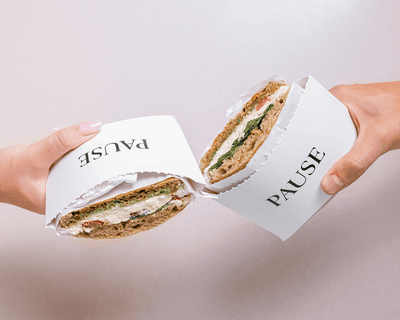Manchego Cheese: A Simple Guide to Spain’s Famous Export
Have you ever taken a bite of something so simple, yet so rich, that it instantly transports you somewhere else? That’s exactly what happens when you taste Manchego cheese. This Spanish classic is more than just a wedge on a cheese board, it’s a bite of history, a texture of tradition, and a flavor that tells a story. Whether you’re a cheese lover or just exploring new flavors, this guide will walk you through everything you need to know about Manchego, without getting too fancy.
Let’s unwrap the mystery behind this iconic cheese from the heart of Spain.
What is Manchego Cheese?
Manchego cheese is a firm, buttery cheese made from the milk of Manchega sheep, which are native to the La Mancha region in Spain. Recognized by its iconic basket-weave patterned rind and ivory-colored paste, Manchego is protected by a PDO (Protected Designation of Origin) status. This means only cheeses made in this region and from this specific breed of sheep can be officially called “Manchego.”
It’s a cheese with character, rich, nutty, slightly tangy, and undeniably satisfying.
Manchego’s story goes back more than 2,000 years. The dry plains of La Mancha, made famous by Don Quixote, have been home to generations of shepherds who crafted this cheese as a way to preserve their sheep’s milk. These traditional methods have been passed down through the centuries, and many cheesemakers in the region still use them today.
So, when you enjoy Manchego, you’re not just eating cheese, you’re experiencing Spanish heritage, culture, and centuries of craftsmanship in every bite.
Why Manchega Sheep Make the Difference
One of the secrets to Manchego’s distinctive flavor lies in its source: Manchega sheep. These animals thrive in the arid conditions of La Mancha and produce milk that is especially rich in fat and protein. This gives the cheese its creamy texture and deep flavor, something you simply can’t replicate with cow’s or goat’s milk.
Think of it this way, just as Champagne must come from a specific region in France, true Manchego must come from the sheep and soil of La Mancha.
How Manchego is Aged and Why it Matters
Manchego cheese is aged anywhere from 2 months to over a year, and that aging process dramatically affects its texture and flavor. Here’s a closer look at the different aging stages:
-
Fresco (under 2 weeks): Very soft and rarely exported outside Spain.
-
Semicurado (2 to 3 months): Light and creamy with mild flavors.
-
Curado (3 to 6 months): Firm with deeper nutty notes and a hint of caramel.
-
Viejo (over 1 year): Dry, crumbly, and bold with sharp, tangy complexity.
The longer the cheese matures, the more intense and layered its flavors become. It’s like aging wine, time makes it better.
What Does Manchego Taste Like?
If we had to describe the taste of Manchego in a few words, they’d be: nutty, creamy, slightly tangy, and buttery. The younger varieties are smooth and mild, perfect for those who like soft cheeses. Aged Manchego, on the other hand, becomes sharper, saltier, and more complex.
It’s the kind of cheese that lingers on your tongue and leaves you wanting more.
Young vs. Aged Manchego: What’s the Difference?
Let’s break this down simply:
-
Young Manchego (Semicurado): Smooth, sliceable, and subtly sweet. Great for sandwiches, tapas, or snacking.
-
Aged Manchego (Curado/Viejo): Crumbly, punchy, and rich in umami. Perfect for grating over dishes or pairing with bold flavors.
Your choice really depends on your mood. Looking for comfort? Go young. Feeling adventurous? Aged Manchego is your friend.
How to Pair Manchego Cheese Like a Pro
Manchego is a social cheese, it loves company. Here are some no-fail pairing ideas that’ll impress anyone (even yourself):
-
Olives: Their briny saltiness complements the cheese’s nuttiness.
-
Chorizo: Spicy sausage and creamy Manchego are a match made in tapas heaven.
-
Marcona almonds: Spanish almonds add a sweet, buttery crunch.
-
Quince paste (Membrillo): A sweet-sour jam that brings out Manchego’s rich notes.
-
Red wine (especially Rioja): Bold, fruity reds hold their own against Manchego’s intensity.
It's like creating a symphony of flavors, every element enhances the next.
Serving Manchego Cheese at Home (It’s Easier Than You Think)
You don’t need a Michelin-starred kitchen to enjoy Manchego. Here are some simple ways to serve it:
-
Slice it into thin wedges or cubes for a snack platter.
-
Layer it on toast with fig jam for a sweet-savory bite.
-
Drizzle with a little honey and serve with nuts for an elegant appetizer.
-
Pair with breadsticks or crusty bread to keep things rustic.
Pro tip: Always let it come to room temperature before serving. Cold cheese dulls the flavor.
Cooking with Manchego: Flavor Boost for Everyday Dishes
Manchego isn’t just for cheese boards, it shines in the kitchen too.
-
Grate it over pasta or risotto for a nutty finish.
-
Melt it on grilled cheese sandwiches for a Spanish twist.
-
Add it to salads, especially those with fruit and nuts.
-
Tuck slices into an omelet for a hearty breakfast.
It’s a cheese that plays well with others and adds depth to whatever you’re cooking.
Storing Manchego at Home: Keep It Fresh
Manchego might be low-maintenance, but it still needs some TLC.
-
Wrap it in cheese paper or wax paper, not plastic.
-
Store in a sealed container in your fridge’s veggie drawer.
-
Let it breathe between uses to avoid moisture build-up.
-
Consume within 3 to 4 weeks after opening for peak flavor.
Whatever you do, don’t freeze it, the texture will never forgive you.
Ready to Try Manchego? We’ve Got You Covered
You don’t have to travel to Spain to enjoy real Manchego. At Maison Morand Paris, we offer authentic Manchego cheese made by traditional cheesemakers in La Mancha. Each wedge is carefully aged, expertly packed, and ready to elevate your kitchen.
Taste Spain. Try Manchego today.
In a world full of fancy cheeses, Manchego stands tall, a timeless favorite with deep roots and unforgettable flavor. Whether you're snacking, pairing, cooking, or entertaining, this cheese brings elegance and authenticity to your table without needing bells and whistles.
So, go ahead. Cut a slice, pour some wine, and let the flavor speak for itself.









